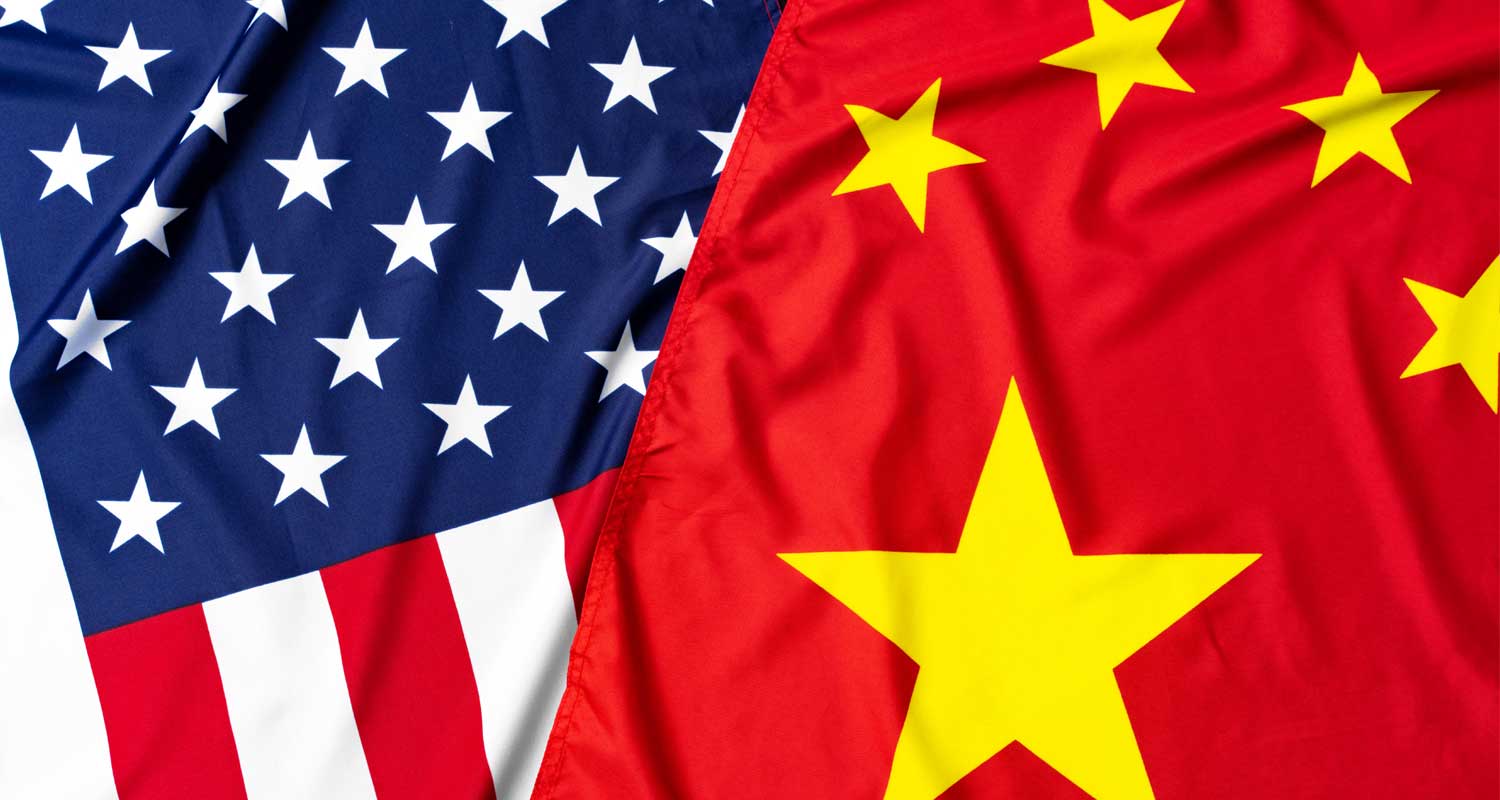 Chinese state-owned telecommunications firms are developing a US$500-million (R9.1-billion) undersea fibre-optic Internet cable network that would link Asia, the Middle East and Europe to rival a similar US-backed project, four people involved in the deal said. The plan is a sign that an intensifying tech war between Beijing and Washington risks tearing the fabric of the Internet.
Chinese state-owned telecommunications firms are developing a US$500-million (R9.1-billion) undersea fibre-optic Internet cable network that would link Asia, the Middle East and Europe to rival a similar US-backed project, four people involved in the deal said. The plan is a sign that an intensifying tech war between Beijing and Washington risks tearing the fabric of the Internet.
China’s three main carriers – China Telecom, China Mobile and China Unicom – are mapping out one of the world’s most advanced and far-reaching subsea cable networks, according to the four people, who have direct knowledge of the plan.
Known as EMA (Europe-Middle East-Asia), the proposed cable would link Hong Kong to China’s island province of Hainan, before snaking its way to Singapore, Pakistan, Saudi Arabia, Egypt and France, the four people said. They asked not to be named because they were not allowed to discuss potential trade secrets.
The cable, which would cost approximately $500-million to complete, would be manufactured and laid by China’s HMN Technologies, a fast-growing cable firm whose predecessor company was majority-owned by Chinese telecoms giant Huawei Technologies, the people said.
They said HMN Tech, which is majority-owned by Shanghai-listed Hengtong Optic-Electric, would receive subsidies from the Chinese state to build the cable.
China Mobile, China Telecom, China Unicom, HMN Tech, Hengtong and China’s foreign ministry did not respond to requests for comment.
News of the planned cable comes in the wake of a Reuters report last month that revealed how the US government, concerned about Beijing eavesdropping on Internet data, has successfully thwarted a number of Chinese undersea cable projects abroad over the past four years. Washington has also blocked licences for planned private subsea cables that would have connected the US with the Chinese territory of Hong Kong, including projects led by Google, Meta Platform and Amazon.com.
Weapons of influence
Undersea cables carry more than 95% of all international Internet traffic. These high-speed conduits for decades have been owned by groups of telecoms and tech companies that pool their resources to build these vast networks so that data can move seamlessly around the world.
But these cables, which are vulnerable to spying and sabotage, have become weapons of influence in an escalating competition between the US and China. The superpowers are battling to dominate the advanced technologies that could determine economic and military supremacy in the decades ahead.
The China-led EMA project is intended to directly rival another cable currently being constructed by US firm SubCom, called SeaMeWe-6 (Southeast Asia-Middle East-Western Europe-6), which will also connect Singapore to France, via Pakistan, Saudi Arabia, Egypt and half a dozen other countries along the route.
Read: China’s military minds fret over Starlink
The consortium on the SeaMeWe-6 cable – which originally had included China Mobile, China Telecom, China Unicom and telecoms carriers from several other nations – initially picked HMN Tech to build that cable. But a successful US government pressure campaign flipped the contract to SubCom last year.
The US blitz included giving millions of dollars in training grants to foreign telecoms firms in return for them choosing SubCom over HMN Tech. The US commerce department also slapped sanctions on HMN Tech in December 2021, alleging the company intended to acquire American technology to help modernise China’s People’s Liberation Army. That move undermined the project’s viability by making it impossible for owners of an HMN-built cable to sell bandwidth to US tech firms, usually their biggest customers.

China Telecom and China Mobile pulled out of the project after SubCom won the contract last year and, along with China Unicom, began planning the EMA cable, the four people involved said. The three state-owned Chinese telecoms firms are expected to own more than half of the new network, but they are also striking deals with foreign partners, the people said.
The Chinese carriers this year signed separate memoranda of understanding with four telecoms firms, the people said: France’s Orange, Pakistan Telecommunication Company, Telecom Egypt and Zain Saudi Arabia, a unit of the Kuwaiti firm MTC.
The Chinese companies have also held talks with Singapore Telecommunications, a state-controlled firm commonly known as Singtel, while other countries in Asia, Africa and the Middle East are being approached to join the consortium as well, the people involved said.
Orange declined to comment. Singtel, Pakistan Telecom, Telecom Egypt and Zain did not respond to requests for comment.
American cable firm SubCom declined to comment on the rival cable. The US department of justice, which oversees an interagency task force to safeguard US telecoms networks from espionage and cyberattacks, declined to comment about the EMA cable.
The more the US and Chinese disengage from each other in the IT domain, the more difficult it becomes to carry out global commerce and basic functions
A US state department spokesman said the US supports a free, open and secure Internet. Countries should prioritise security and privacy by “fully excluding untrustworthy vendors” from wireless networks, terrestrial and undersea cables, satellites, cloud services and data centres, the spokesman said, without mentioning HMN Tech or China. The state department did not respond to questions about whether it would mount a campaign to persuade foreign telecoms firms not to participate in the EMA cable project.
Large undersea cable projects typically take at least three years to move from conception to delivery. The Chinese firms are hoping to finalise contracts by the end of the year and have the EMA cable online by the end of 2025, the people involved said.
The cable would give China strategic gains in its tussle with the US, one of the people involved in the deal said.
Firstly, it would create a super-fast new connection between Hong Kong, China and much of the rest of the world, something Washington wants to avoid. Secondly, it gives China’s state-backed telecoms carriers greater reach and protection in the event they are excluded from US-backed cables in the future.
“It’s like each side is arming itself with bandwidth,” one telecoms executive working on the deal said.
Unprecedented
The construction of parallel US- and Chinese-backed cables between Asia and Europe is unprecedented, the four people involved in the project said. It is an early sign that global Internet infrastructure, including cables, data centres and mobile phone networks, could become divided over the next decade, two security analysts said.
Countries could also be forced to choose between using Chinese-approved Internet equipment or US-backed networks, entrenching divisions across the world and making tools that fuel the global economy, like online banking and GPS systems, slower and less reliable, said Timothy Heath, a defence researcher at the Rand Corporation, a US-based think-tank.
“It seems we are headed down a road where there will be a US-led Internet and a Chinese-led Internet ecosystem,” Heath said. “The more the US and Chinese disengage from each other in the IT domain, the more difficult it becomes to carry out global commerce and basic functions.”
Read: China wants ‘whole nation’ stance on tech as US sanctions bite
Antonia Hmaidi, an analyst at the Berlin-based Mercator Institute for China Studies, said the Internet works so well because no matter where data needs to travel, it can zip along multiple different routes in the time it takes to read this word.
Hmaidi said if data has to follow routes that are approved in Washington and Beijing, then it will become easier for the US and China to manipulate and spy on that data; Internet users will suffer a degradation of service; and it will become more difficult to interact or do business with people around the world. “Then suddenly the whole fabric of the Internet doesn’t work as it was intended,” Hmaidi said.
 The tit-for-tat battle over Internet hardware mirrors the conflict taking place over social media apps and search engines created by US and Chinese firms.
The tit-for-tat battle over Internet hardware mirrors the conflict taking place over social media apps and search engines created by US and Chinese firms.
The US and its allies have banned the use of Chinese-owned short video app TikTok from government-owned devices due to national security concerns. Numerous countries have raised fears about the Chinese government gaining access to the data that TikTok collects on its users around the world.
China, meanwhile, already restricts what websites its citizens can see and blocks the apps and networks of many Western technology giants, including Google, YouTube, Facebook and Twitter. — Joe Brock, with Brenda Goh, Ryan Woo, Michel Rose, Ariba Shahid, Aziz El Yaakoubi and Silvia Aloisi, (c) 2023 Reuters

